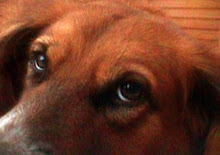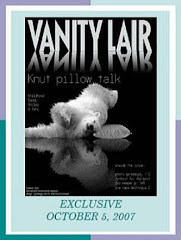Seit ein paar Monaten ziert diese Dose mein Arbeitszimmer, und ich gestehe, ich wusste nicht viel über ihn, den Bären auf dieser Dose.Zeit das zu ändern.
For a few months this box adorns my study, and I confess I did not know much about him, the bear on this box. Time to change this now.

Die in Großbritannien sehr bekannte Kinderbuchfigur Paddington Bär von Michael Bond wurde 1958 nach dem gleichnamigen Bahnhof in London benannt.
Im ersten Band, dem zahlreiche weitere folgen sollten, trifft eine englische Familie im Londoner Bahnhof Paddington einen Bären, der aus dem „dunkelsten Peru“ („darkest Peru“) stammt. Mr. und Mrs. Brown entdecken den Bären auf dem Bahnsteig, als sie ihre Tochter Judy vom Zug abholen wollen. Der kleine Bär trägt ein Schild um den Hals, auf dem steht: „Please look after this Bear, thank you“ („Bitte kümmern Sie sich um diesen Bären, dankeschön“). Mrs. Brown findet, man müsse ihn mitnehmen, weil man ja nicht wisse, was sonst alles mit ihm passieren könne. Sie nennen ihn nach dem Bahnhof, in dem sie ihn getroffen haben: Paddington.
Der Bär ist wirklich etwas Besonderes. Er kann sprechen und hat gute Manieren. Er hat eine besondere Vorliebe für Marmelade aus Bitterorangen. Er trägt entweder einen gelben Hut und eine hellblaue Jacke oder einen roten Hut und einen dunkelblauen Dufflecoat.
Für Familie Brown beginnt mit Paddington eine unruhige Zeit. Der Bär hat zwar gutes Benehmen, aber er gerät immer wieder in missliche Situationen („Things are always happening to me. I’m that sort of bear“).
Die Buchreihe diente als Vorlage für die Puppenserie Paddington (1975–1984) und die Zeichentrickreihe Die Abenteuer von Paddington Bär (1997–2001).
Im ersten Band, dem zahlreiche weitere folgen sollten, trifft eine englische Familie im Londoner Bahnhof Paddington einen Bären, der aus dem „dunkelsten Peru“ („darkest Peru“) stammt. Mr. und Mrs. Brown entdecken den Bären auf dem Bahnsteig, als sie ihre Tochter Judy vom Zug abholen wollen. Der kleine Bär trägt ein Schild um den Hals, auf dem steht: „Please look after this Bear, thank you“ („Bitte kümmern Sie sich um diesen Bären, dankeschön“). Mrs. Brown findet, man müsse ihn mitnehmen, weil man ja nicht wisse, was sonst alles mit ihm passieren könne. Sie nennen ihn nach dem Bahnhof, in dem sie ihn getroffen haben: Paddington.
Der Bär ist wirklich etwas Besonderes. Er kann sprechen und hat gute Manieren. Er hat eine besondere Vorliebe für Marmelade aus Bitterorangen. Er trägt entweder einen gelben Hut und eine hellblaue Jacke oder einen roten Hut und einen dunkelblauen Dufflecoat.
Für Familie Brown beginnt mit Paddington eine unruhige Zeit. Der Bär hat zwar gutes Benehmen, aber er gerät immer wieder in missliche Situationen („Things are always happening to me. I’m that sort of bear“).
Die Buchreihe diente als Vorlage für die Puppenserie Paddington (1975–1984) und die Zeichentrickreihe Die Abenteuer von Paddington Bär (1997–2001).
Bond based Paddington Bear on a lone teddy bear which he noticed on a shelf in a London store near Paddington Station on Christmas Eve 1956, which he bought as a present for his wife. The bear inspired Bond to write a story, and in 10 days he had written the first book. The book was given to his agent, Harvey Unna. "A Bear Called Paddington" was first published on 13 October 1958

Paddington
Bear waiting ...
In the first story, Paddington is found at Paddington Railway Station in London by the Brown family, sitting on his suitcase (bearing the label "Wanted On Voyage") with a note attached to his coat which reads "Please look after this bear. Thank you." Bond has said that his memories of newsreels showing trainloads of child evacuees leaving London during the war, with labels around their necks and their possessions in small suitcases, prompted him to do the same for Paddington.
Paddington arrives as a stowaway coming from "Darkest Peru", sent by his Aunt Lucy (one of his only known relatives aside from an Uncle Pastuzo who gave Paddington his hat) who has gone to live in the Home for Retired Bears in Lima. He claims, "I came all the way in a lifeboat, and ate marmalade. Bears like marmalade." He tells them that no one can understand his Peruvian name, so the Browns decide to call him Paddington after the railway station in which he was found. Paddington's Peruvian name is ultimately revealed to be "Pastuso" (not to be confused with his "Uncle Pastuzo"). Bond originally wanted Paddington to have "travelled all the way from darkest Africa", but his agent advised him that there were no bears in darkest Africa, and thus it was amended to darkest Peru, home of the spectacled bear.
The waiting was worth it...
They take him home to 32 Windsor Gardens, off Harrow Road between Notting Hill and Maida Vale. Paddington frequents the nearby Portobello Road markets, where he is known for, and respected by, the shopkeepers for driving a very hard bargain. When he gets annoyed with someone, he often gives them one of his special "hard stares" (taught to him by Aunt Lucy), which causes the person to become flushed and embarrassed.
The stories follow Paddington's adventures and mishaps in England, along with some snippets of information about his past. For instance, in one story we learn that Paddington was orphaned in an earthquake, before being taken in and raised by his Aunt Lucy.
He loves orange jam...
Übrigens, als er gefunden wurde, war Paddington nicht ganz sicher, wie alt er war. So beschlossen die Browns, wieder mit eins anzufangen. Sie beschlossen auch, dass er zwei Geburtstage im Jahr (wie die Queen!) haben sollte, und so feiert er seinen Geburtstag am 25. Juni und 25. Dezember.-
By the way, when he was found, Paddington wasn’t too sure how old he was so the Browns decided to start again at one. They also decided that he should have two birthdays a year (just like the Queen!) and so he celebrates these on 25th June and 25th December.
Es gibt viele Bären wie Paddington, die darauf warten, dass sich um sie gekümmert wird. Zugegebenermaßen, sie tragen nicht alle einen Zettel um den Hals, und statt guten Benehmens, wobei es auch das gibt, machen sie eher spektakulär durch unerwartete Besuche an Mülltonnen, auf Terrassen oder Schokoladengeschäften auf sich aufmerksam. Oft lösen sie das Gegenteil aus, statt sich um die Bären zu kümmern, werden sie gejagt.aber manchmal klappt es. Wie bei Meatball.-
By the way there are many bears like Paddington outside, not always bearing a sign but asking for being looked after anyway. Instead of good behaviour, although it does exist too, or waiting with a suitcase at the station, they are more known for unexpected visits at garbage cans, in gardens, on patios or chocolate stores.Very often it triggers the contrary, instead of being cared for, the bears are chased. But sometimes it really works. Meet Meatball.
Persistent: Meatball was caught rummaging in the same California garage
three times
"A 500lb black bear, whose repeated visits to a Los Angeles neighbourhood earned him celebrity status, will be allowed to live thanks to an online campaign to save him.
Meatball, named because of his habit of taking frozen meatballs from garage freezers, has been moved to a wild animal sanctuary in the mountains of southern California.
He became a fixture on American television screens through the summer, rummaging through bins and clambering over garden fences.Officials from the California Department of Fish and Game captured him a number of times and returned him to his home in the Angeles National Forest but Meatball kept coming back.
He may have travelled up to 200 miles to reach the same neighbourhood. Usually a bear that demonstrates such an interest in residential areas would be put down.But the publicity around Meatball's story has saved his life: a massive online campaign, led by a Twitter account in his name, has prompted a fundraising drive to build his new home.
Meatball, named because of his habit of taking frozen meatballs from garage freezers, has been moved to a wild animal sanctuary in the mountains of southern California.
He became a fixture on American television screens through the summer, rummaging through bins and clambering over garden fences.Officials from the California Department of Fish and Game captured him a number of times and returned him to his home in the Angeles National Forest but Meatball kept coming back.
He may have travelled up to 200 miles to reach the same neighbourhood. Usually a bear that demonstrates such an interest in residential areas would be put down.But the publicity around Meatball's story has saved his life: a massive online campaign, led by a Twitter account in his name, has prompted a fundraising drive to build his new home.
BBB - Big, Black & Beautiful
Bobbi Brink, founder of the Lions, Tigers and Bears sanctuary near San
Diego which Meatball now calls home, said they have already raised half
of the $250,000 (£155,000) needed to craft a new six-acre habitat.She said: "It is heart-warming that people care about animals as much as we do. He is a very loved bear, a very special bear. He's beautiful.
"He's got a great sense of humour, he's funny and smart and I can't wait to get him out into the habitat because he wants out now."
Meatball now enjoys a diet including grapes and, his particular favourite, peanut butter sandwiches.
Although black bears are generally considered to be less of a threat to humans, experts regularly issue advice to people living near bear habitats on what to do in the event of an encounter with the animal.
Their appearances in Los Angeles neighbourhoods have become more frequent as bears seek out regular sources of food.Some in the suburb of Glendale believed Meatball had worked out which day rubbish bins were put out for collection.
"He's got a great sense of humour, he's funny and smart and I can't wait to get him out into the habitat because he wants out now."
Meatball now enjoys a diet including grapes and, his particular favourite, peanut butter sandwiches.
Although black bears are generally considered to be less of a threat to humans, experts regularly issue advice to people living near bear habitats on what to do in the event of an encounter with the animal.
Their appearances in Los Angeles neighbourhoods have become more frequent as bears seek out regular sources of food.Some in the suburb of Glendale believed Meatball had worked out which day rubbish bins were put out for collection.
Meatball will share his home with one male and three female bears in a sanctuary which also houses big cats rescued from private collections or abuse.
Wildlife experts say it would be impractical to re-home more wild bears - Meatball is the lucky one."
Sources:
- "Meatball" the bear captured/22 News 11.04.2012
- His life's a picnic!/Mail online 31.08.2011
- Meatball the Bear: social media celebrity saves animal/CBS 19.10.2012






















































2 Kommentare:
Liebe Birgit,
das ist eine schöne Bärengeschichte von Paddington, die ich noch nicht kannte. Mit diesem Wissen ist Deine Schmuckdose jetzt noch wertvoller.
Der Frikadellen klauende Bär ist auch sehr amüsant.
Liebe Grüße
Britta-Gudrun
Liebe Birgit,
Paddington Bear ("Karhuherra Paddington" auf Finnisch - "karhu" = "Bär", "herra" = "Herr") ist eine ganz liebenswürdige Figur, die ich schon lange kenne. Als ich vor vielen, vielen Jahren einmal dienstlich nach London musste, habe ich am Flughafen ein dünnes Paddington-Heft gekauft, ich konnte nicht daran vorbeigehen. Die Zeichnungen sind von John Lobban, der auf den offiziellen Paddington-Webseiten nicht erwähnt wird, warum auch immer.
Da Paddington aus Peru kommt, nehmen manche an, dass er ein Brillenbär ist ... Und hier noch etwas vom Tagesspiegel:
http://www.tagesspiegel.de/zeitung/zahlen-bitte-paddington-baer/v_print/1272318.html
Herzlichen Dank für diesen schönen Beitrag!
Viele Grüße
LeenaP
Kommentar veröffentlichen